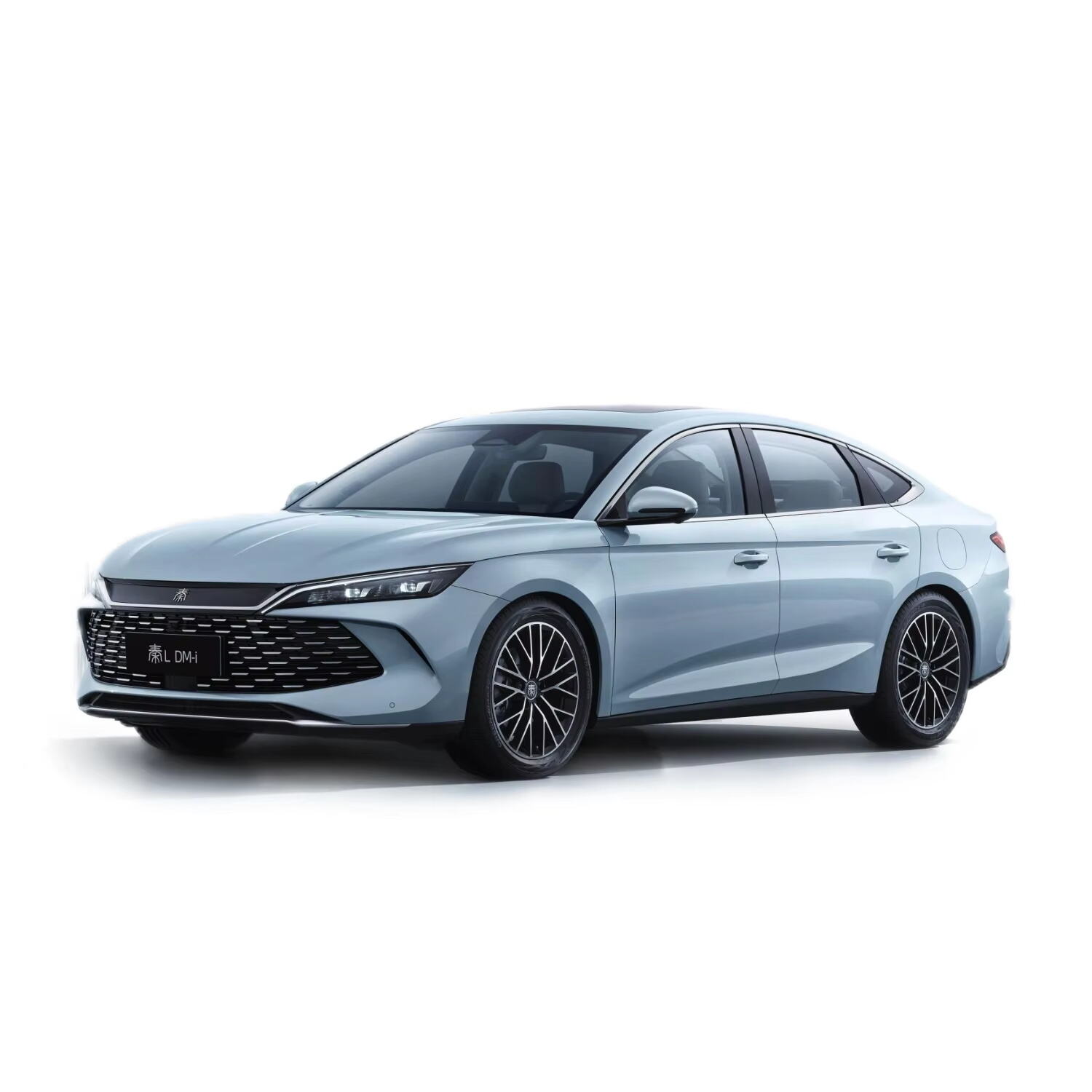Introduction: The Rise of Electric Cars in 2025
Why 2025 is a Pivotal Year for Electric Vehicles
The year 2025 is anticipated to be a transformative period for electric vehicles (EVs), as projections indicate a major leap in global adoption. Industry reports estimate EV sales could exceed 20 million units by then, reflecting a significant shift in the automotive landscape. Governments worldwide are reinforcing this change with stringent environmental policies and incentives aimed at phasing out petrol and diesel vehicles. Many nations have committed to banning the sale of new combustion-engine cars by 2025, thus accelerating the transition to sustainable transport. Additionally, consumers are becoming increasingly environmentally conscious, driving a trend towards sustainability. By 2025, it is expected that electric vehicles will capture around 25% of the total car market, representing a major penetration given past years' figures.
The Importance of Tracking EV Innovations
Monitoring innovations in the electric vehicle sector is vital for consumers, manufacturers, and investors alike, as it significantly influences market trends and technological progress. Key developments like enhanced battery efficiency and innovative charging solutions are essential for broadening EV popularity. Keeping a close eye on these advancements ensures stakeholders are well-informed and prepared for shifts in industry dynamics, including the rise of new market leaders and emerging players. Understanding these changes helps make informed decisions, whether it involves purchasing an electric car, investing in EV stocks, or manufacturing related technologies. Regular updates on EV innovations foster a broader acceptance of electric vehicles, paving the way for a sustainable future.
Top 10 Electric Cars to Watch in 2025
Tesla Roadster: Redefining Speed and Range
The Tesla Roadster is poised to set a new benchmark in the realm of electric sports cars with astonishing performance metrics. It boasts a blistering acceleration from 0 to 60 mph in under two seconds, promising a thrilling ride for speed enthusiasts. Besides its remarkable speed, the Roadster offers a projected range of over 600 miles, addressing the range anxiety that deters many potential EV buyers. Complementing these features are Tesla’s signature advanced technologies, including an autopilot system, reinforcing its leading position in the electric vehicle market. For more in-depth information, check out the Tesla Roadster.
Porsche Taycan GT: Performance Meets Luxury
The Porsche Taycan GT seamlessly combines high performance with luxury, making it a standout choice for the discerning affluent consumer. Powered by a dual-motor setup, the Taycan GT delivers over 600 horsepower, ensuring an exhilarating driving experience. Inside, the car offers a refined, luxurious interior equipped with a state-of-the-art infotainment system, epitomizing comfort and technology. Moreover, Porsche's use of sustainable materials meets the growing demand for eco-conscious luxury vehicles. Explore the specifications of the Porsche Taycan GT for more details.
Rimac C_Two: The Hypercar Revolution
With an astounding 1,914 horsepower, the Rimac C_Two is revolutionizing what a hypercar can achieve, demonstrating the peak of electric performance. This vehicle features advanced driving aids and an array of high-tech gadgets, making it a must-have for speed enthusiasts. Additionally, its limited production run ensures exclusivity, enhancing its desirability among collectors. Delve deeper into the Rimac C_Two to uncover more details about its groundbreaking technology.
Lotus Evija: Lightweight Electric Powerhouse
The Lotus Evija stands out with its emphasis on lightweight design coupled with a potent electric drivetrain, promising unrivaled agility and performance. Predicted to produce an impressive 2,000 horsepower, the Evija is positioned among the leading contenders in the electric performance segment, attracting a niche market dedicated to exceptional speed. Sustainability is at the heart of its design, with eco-friendly materials being utilized in its manufacturing process. Discover more about the Lotus Evija.
Audi e-tron GT RS: Sporty Sustainability
The Audi e-tron GT RS marries sporty aesthetics with functionality, showcasing that sustainability can indeed be stylish. Its quick acceleration and extensive range make it particularly attractive to those considering a switch to electric vehicles. Audi's focus on performance and luxury persistently draws traditional car enthusiasts towards electric vehicle alternatives. For more information on what the Audi e-tron GT RS offers, follow the link.
BMW i8 M: Hybrid to Electric Evolution
The transition from the BMW i8 to the i8 M signifies the brand's journey towards an all-electric performance model, appealing to hybrid enthusiasts making the transition. Innovations in aerodynamics and lightweight construction enhance not just performance but also energy efficiency. A focus on technological connectivity in the driver’s cockpit elevates the luxury experience. Find out more about the BMW i8 M and its advancements.
Mercedes-AMG EQG: Off-Road Electrification
The Mercedes-AMG EQG marks a pivotal move by Mercedes into electric off-road vehicles, delivering robustness comparable to its petrol-powered equivalents. Fusing ruggedness with luxury, it’s intended for adventurous consumers looking for sustainable alternatives. With advanced off-road tech paired with electric efficiency, it’s redefining expectations of off-road vehicles. For intricate details, visit the link to explore the Mercedes-AMG EQG.
Lucid Air Sapphire: Luxury Meets Efficiency
The Lucid Air Sapphire strives to blend premium luxury with leading efficiency, positioning itself as a direct competitor to traditional luxury automakers. Its anticipated range of over 500 miles alleviates range anxiety and secures its appeal among luxury EV buyers. Inclusion of advanced driver-assistance systems further enhances safety and the driving experience. Discover more about the Lucid Air Sapphire.
Ferrari SF90 Stradale EV: Thrilling Soundscapes
Ferrari's SF90 Stradale EV aims to maintain the iconic sound and driving experience emblematic of the brand while transitioning into the electric vehicle arena. Its performance promises exhilarating speeds, leveraging electric capabilities for unparalleled torque. A fusion of innovative hybrid technology with Ferrari's illustrious racing heritage sets it apart in the EV sector. Dive into the technologies underlying the Ferrari SF90 Stradale EV.
Maserati GranTurismo Folgore: Italian Flair
The Maserati GranTurismo Folgore showcases Italian craftsmanship and cutting-edge electric technology, tailored for fans of the renowned brand. Performance specifications highlight its blend of tradition and innovation, packaged in an exciting electric coupe. Maserati preserves its luxurious heritage while embracing sustainable electric methodologies. Further details can be found through the Maserati GranTurismo Folgore.
Key Trends Shaping Electric Cars in 2025
Breakthroughs in Battery Technology
The electric vehicle landscape in 2025 is largely being shaped by remarkable breakthroughs in battery technology, especially the emergence of solid-state batteries. Unlike traditional lithium-ion batteries, solid-state batteries promise significantly improved energy density and safety. They afford reductions in size while boosting the vehicle's power and range. This transition could substantially shorten the charging times, making electric vehicles (EVs) more appealing to consumers who demand efficiency and convenience. Moreover, companies that invest heavily in research and development for these battery technologies are expected to gain a competitive edge as the acceleration of EV adoption continues.
Ultra-Fast Charging Infrastructure
The demand for ultra-fast charging infrastructure is an essential trend driving the electric car market in 2025. As consumers seek more convenience, the availability of ultra-fast charging stations, capable of delivering 350 kW, becomes crucial. This advancement significantly reduces wait times at charging stations and supports the practicalities of EV ownership. Additionally, both public and private entities are heavily investing in expanding charging network availability, ensuring that by 2025 these infrastructures will become ubiquitous, removing a major barrier to widespread EV adoption.
Integration of Autonomous Driving Features
Autonomous driving technologies are poised to revolutionize the EV experience by enhancing safety, convenience, and overall usability. Industry data reflects a growing consumer interest in these advanced features as they offer hands-free driving capabilities that respond to real-time road conditions. Developments in artificial intelligence (AI) enable these vehicles to interact more intelligently with their environment, elevating the standard for smart electric vehicles. As technology progresses, the seamless integration of these autonomous features into electric cars promises to capture the imagination of drivers eager for innovation and sophistication in the coming years.
Innovations Driving the Future of EVs
Solid-State Batteries: The Next Frontier
Solid-state batteries are poised to be the game-changer in the electric vehicle (EV) industry, promising enhanced safety and superior energy density compared to current battery technologies. Research shows that these advancements in energy storage can result in longer battery lifespan and more efficient energy usage, thus paving the way for significant strides in electric mobility. Many leading automotive manufacturers are joining forces with technology firms to catalyze the development and deployment of solid-state batteries. This collaboration aims to accelerate the introduction of these batteries in a bid to redefine the future landscape of electric vehicles.
AI-Driven Energy Management Systems
Artificial Intelligence (AI) is revolutionizing the energy management systems in electric vehicles, aiming to optimize energy utilization and extend battery life. By analyzing driving patterns and behaviors, AI systems are able to make real-time adjustments to energy consumption, maximizing the vehicle's range while minimizing the frequency and length of charging cycles. The integration of AI into EVs is viewed as a critical step towards the development of smarter, more efficient vehicles. As AI continues to evolve, its applications in energy management are expected to set new standards in vehicle efficiency and sustainability.
Vehicle-to-Grid (V2G) Capabilities
Vehicle-to-Grid (V2G) technology enables electric vehicles to not only consume energy but to also communicate with the energy grid, serving as storage units that can distribute power back to the grid when needed. This innovation allows electric cars to play a vital role in balancing supply and demand within the energy ecosystem, positioning themselves as a cornerstone of sustainable energy solutions. Recent studies suggest that widespread adoption of V2G technology could lead to substantial cost savings for consumers and significantly reduce pressure on electrical grids. This shift could transform EVs into key components of energy management systems, enhancing the resilience and flexibility of our power infrastructure.
FAQ
1. Why is 2025 significant for electric vehicles?
The year 2025 is projected to see major global adoption of electric vehicles (EVs) due to technological advances, government incentives, and environmental policies aiming to phase out petrol and diesel vehicles, leading to anticipated EV sales exceeding 20 million units.
2. What are some key trends shaping the electric vehicle market in 2025?
Main trends include breakthroughs in battery technology like solid-state batteries, the growth of ultra-fast charging infrastructure, and the integration of autonomous driving features, all contributing to the wider appeal and efficiency of electric vehicles.
3. How do solid-state batteries differ from traditional lithium-ion batteries?
Solid-state batteries offer higher energy density, increased safety, and reduced size compared to traditional lithium-ion batteries and have the potential to decrease charging times significantly.
4. Why is monitoring EV innovations important?
Tracking EV innovations is crucial for consumers, manufacturers, and investors to stay informed and make strategic decisions, notably regarding electric car purchases, investments, and growing market trends.
Table of Contents
- Introduction: The Rise of Electric Cars in 2025
-
Top 10 Electric Cars to Watch in 2025
- Tesla Roadster: Redefining Speed and Range
- Porsche Taycan GT: Performance Meets Luxury
- Rimac C_Two: The Hypercar Revolution
- Lotus Evija: Lightweight Electric Powerhouse
- Audi e-tron GT RS: Sporty Sustainability
- BMW i8 M: Hybrid to Electric Evolution
- Mercedes-AMG EQG: Off-Road Electrification
- Lucid Air Sapphire: Luxury Meets Efficiency
- Ferrari SF90 Stradale EV: Thrilling Soundscapes
- Maserati GranTurismo Folgore: Italian Flair
- Key Trends Shaping Electric Cars in 2025
- Innovations Driving the Future of EVs
- FAQ

 EN
EN
